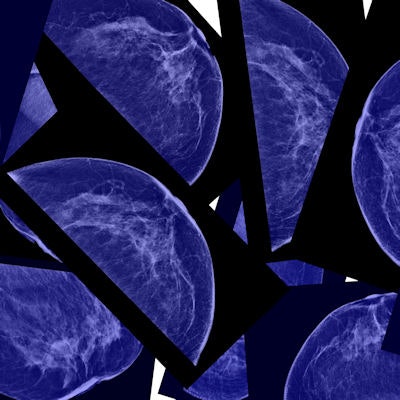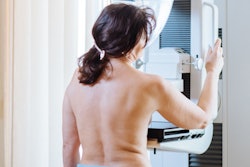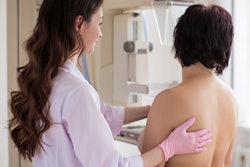
Allowing women some measure of control over breast compression at mammography doesn't reduce image quality or increase radiation dose -- and it may, in fact, encourage them to return for needed breast imaging, according to a study published online September 14 in the European Journal of Cancer.
Although breast imaging technology has continued to improve, the fact remains that mammography requires compression, and many women experience pain or discomfort from it. This discomfort can cause them to avoid the exam, wrote a team led by Dr. Corinne Balleyguier from Gustave Roussy and Paris-Sud University in France.
"While compression is important to improve the image quality and reduce the absorbed dose to the breast, there is evidence that the perception of pain and discomfort of mammography can deter women from having a mammogram," the group wrote.
Giving women some measure of control over mammography compression is one possible solution. For their study, Balleyguier and colleagues investigated the effect of patient-assisted compression at mammography on image quality, radiation dose, workflow, and patient experience. The group included 100 women who presented for mammography between October 2016 and March 2017.
Of these women, 66 had postsurgery or post-treatment exams, while 34 had screening mammography. Thirty percent underwent digital mammography alone and 70% had a combined 2D/3D exam. Technologists performed initial compression at levels up to 3 decanewtons (daN) before the women were offered the opportunity to further compress the tissue.
When women had a part in controlling the compression, they actually enforced higher pressure measures than technologists, the researchers found. For the craniocaudal (CC) view, mean force was 10.04 daN for patient-assisted compression and 8.74 daN for technologist-assisted compression. On the mediolateral-oblique (MLO) view, it was 9.51 daN for patient-assisted compression and 8.48 daN for technologist-assisted compression.
In addition, the average glandular dose was comparable, Balleyguier's group found.
| Technologist- vs. patient-assisted compression on mammography | |||
| Median value for technologist-assisted compression | Median value for patient-assisted compression | p-value | |
| Compression force | |||
| CC view | 8.7 daN | 10 daN | < 0.0001 |
| MLO view | 8.5 daN | 9.5 daN | < 0.0001 |
| Average glandular dose | |||
| CC view | 1.36 mGy | 1.35 mGy | 0.02 |
| MLO view | 1.45 mGy | 1.38 mGy | 0.29 |
Radiologists who assessed the mammograms found that 10% of the patient-assisted exams had better image quality than the technologist-assisted exams, 85% were equivalent, and 5% were subpar. In 80% of cases, adding patient-assisted compression did not increase the time required for the exam.
Although the researchers found no significant difference in the women's reporting of discomfort and pain on mammography between self-compression and technologist-compression, 90% of study participants said it was useful to have the option and 74% said it made them more willing to return for their next mammogram.
"[Our] results show that [patient-assisted compression] did not reduce the image quality or increase the radiation dose and had little impact on workflow," the group noted. "Perhaps most importantly, the majority of patients (> 70%) felt that the self-compressing device would facilitate their reattendance."




















